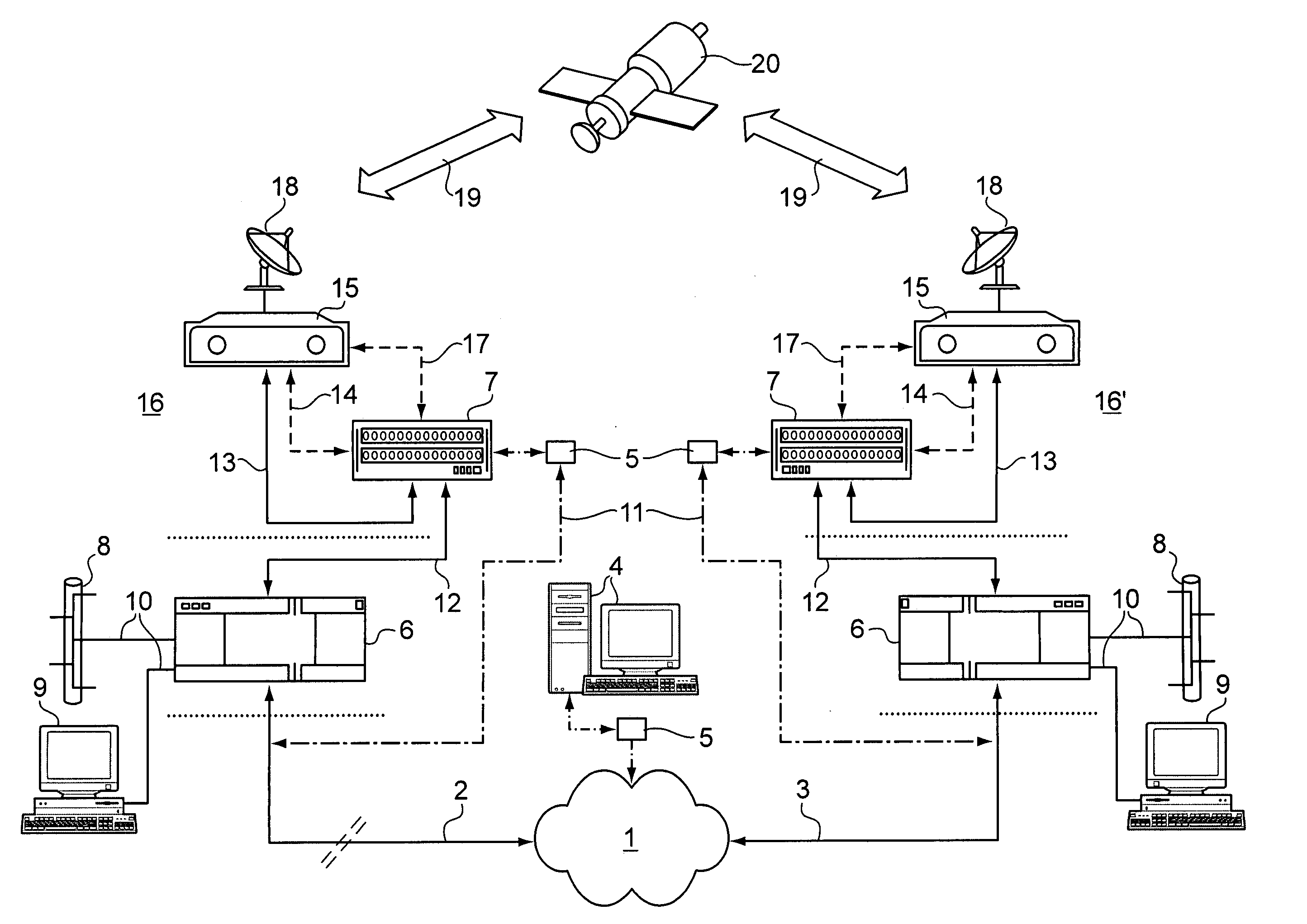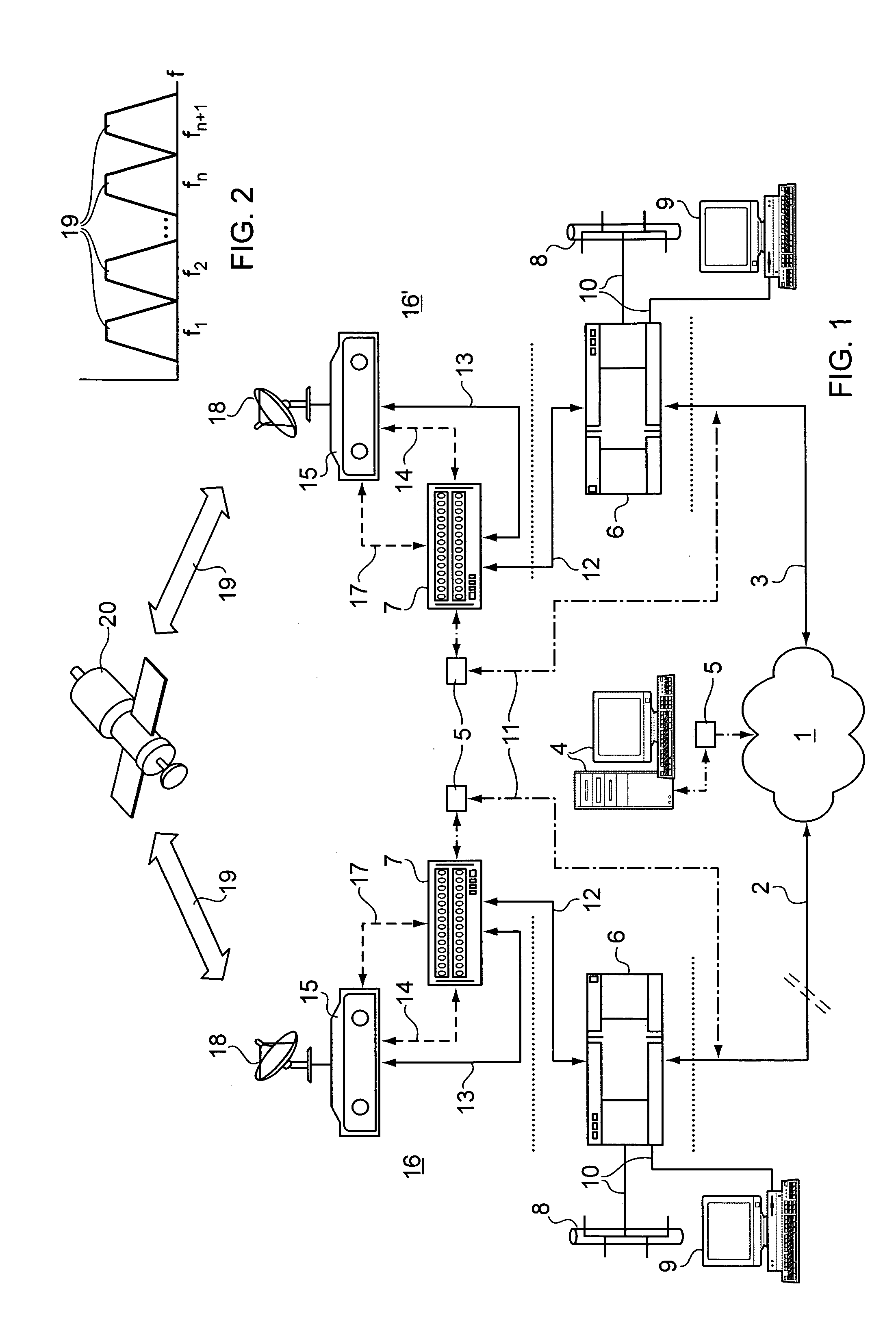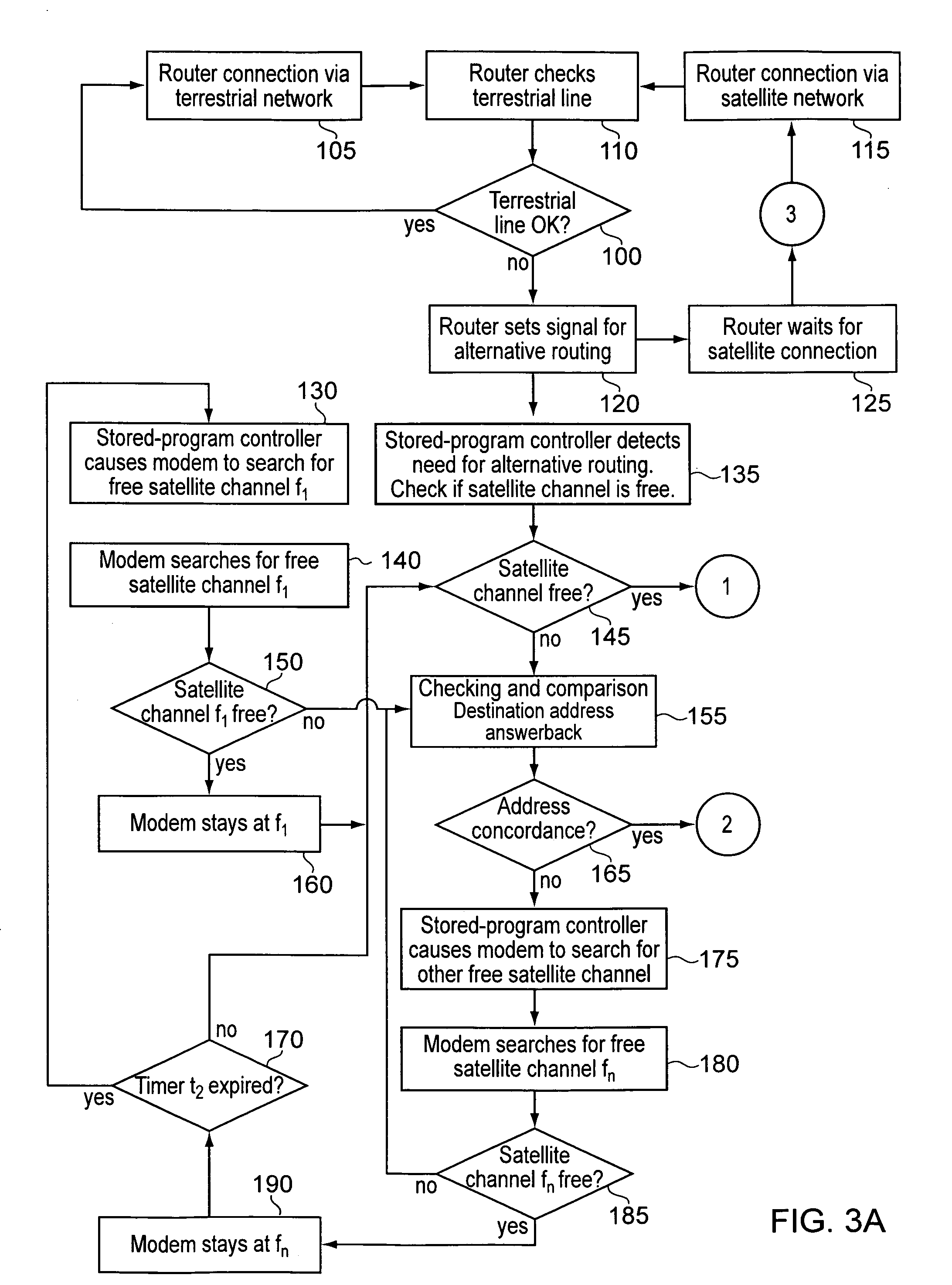Method and system for controlling the use of satellite transmission capacity in terrestrial networks
- Summary
- Abstract
- Description
- Claims
- Application Information
AI Technical Summary
Benefits of technology
Problems solved by technology
Method used
Image
Examples
Embodiment Construction
[0015]FIG. 1 shows a basic circuit diagram required for implementing the system and process for the automatic, decentralized control of the use of satellite transmission capacity for the substitution of out-of-order data lines in terrestrial networks. FIG. 1 shows a terrestrial network 1 which is connected via each of lines 2 and 3 to a router or similar circuit 6. In the example shown, it is assumed that line 2 is out of order. Terrestrial network 1 is also connected to a “hub”4 via a modem 5. Routers 6 are each connected to customer devices 8 and to terminals 9 for data input and output. In addition, routers 6 are each connected to a stored-program controller 7, in each case via a line 12. Furthermore, each of the two stored-program controllers 7 is connected to a modem 5, via which stored-program controllers 7 are able to enter into communication via a line 11 with hub 4, for example for the reporting of detected equipment faults in the free-line state. Stored-program controllers...
PUM
 Login to View More
Login to View More Abstract
Description
Claims
Application Information
 Login to View More
Login to View More - R&D
- Intellectual Property
- Life Sciences
- Materials
- Tech Scout
- Unparalleled Data Quality
- Higher Quality Content
- 60% Fewer Hallucinations
Browse by: Latest US Patents, China's latest patents, Technical Efficacy Thesaurus, Application Domain, Technology Topic, Popular Technical Reports.
© 2025 PatSnap. All rights reserved.Legal|Privacy policy|Modern Slavery Act Transparency Statement|Sitemap|About US| Contact US: help@patsnap.com



